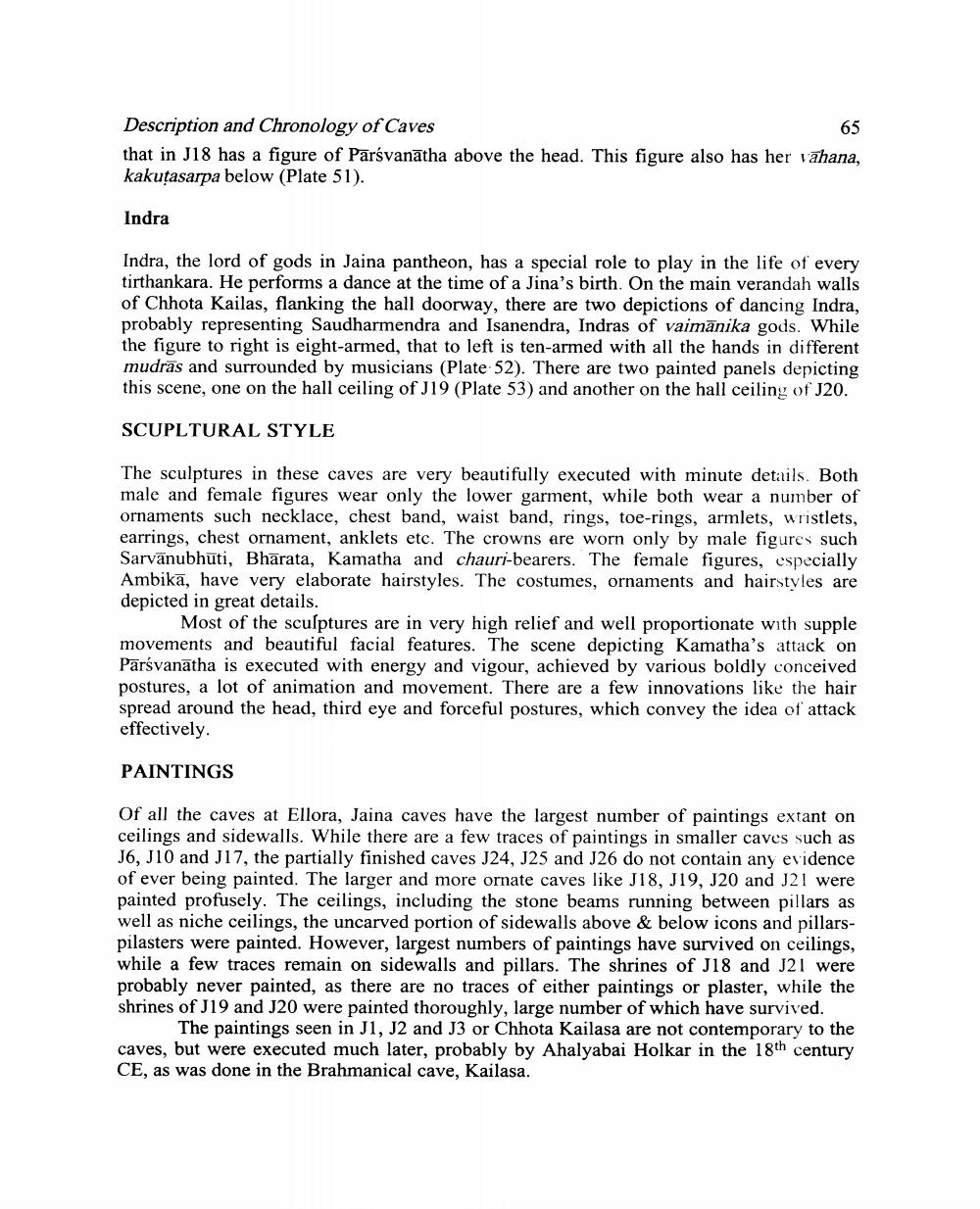________________
Description and Chronology of Caves
65 that in J18 has a figure of Parsvanātha above the head. This figure also has her vahana, kakutasarpa below (Plate 51).
Indra
Indra, the lord of gods in Jaina pantheon, has a special role to play in the life of every tirthankara. He performs a dance at the time of a Jina's birth. On the main verandah walls of Chhota Kailas, flanking the hall doorway, there are two depictions of dancing Indra, probably representing Saudharmendra and Isanendra, Indras of vaimānika gods. While the figure to right is eight-armed, that to left is ten-armed with all the hands in different mudras and surrounded by musicians (Plate 52). There are two painted panels depicting this scene, one on the hall ceiling of J19 (Plate 53) and another on the hall ceiling of J20.
SCUPLTURAL STYLE
The sculptures in these caves are very beautifully executed with minute details. Both male and female figures wear only the lower garment, while both wear a number of ornaments such necklace, chest band, waist band, rings, toe-rings, armlets, wristlets, earrings, chest ornament, anklets etc. The crowns are worn only by male figures such Sarvānubhuti, Bharata, Kamatha and chauri-bearers. The female figures, especially Ambikā, have very elaborate hairstyles. The costumes, ornaments and hairstyles are depicted in great details.
Most of the sculptures are in very high relief and well proportionate with supple movements and beautiful facial features. The scene depicting Kamatha's attack on Parsvanatha is executed with energy and vigour, achieved by various boldly conceived postures, a lot of animation and movement. There are a few innovations like the hair spread around the head, third eye and forceful postures, which convey the idea of attack effectively.
PAINTINGS
Of all the caves at Ellora, Jaina caves have the largest number of paintings extant on ceilings and sidewalls. While there are a few traces of paintings in smaller caves such as J6, J10 and J17, the partially finished caves J24, J25 and J26 do not contain any evidence of ever being painted. The larger and more ornate caves like J18 J19, J20 and J21 were painted profusely. The ceilings, including the stone beams running between pillars as well as niche ceilings, the uncarved portion of sidewalls above & below icons and pillarspilasters were painted. However, largest numbers of paintings have survived on ceilings, while a few traces remain on sidewalls and pillars. The shrines of J18 and J21 were probably never painted, as there are no traces of either paintings or plaster, while the shrines of J19 and J20 were painted thoroughly, large number of which have survived.
The paintings seen in Ji, J2 and J3 or Chhota Kailasa are not contemporary to the caves, but were executed much later, probably by Ahalyabai Holkar in the 19th century CE, as was done in the Brahmanical cave, Kailasa.




